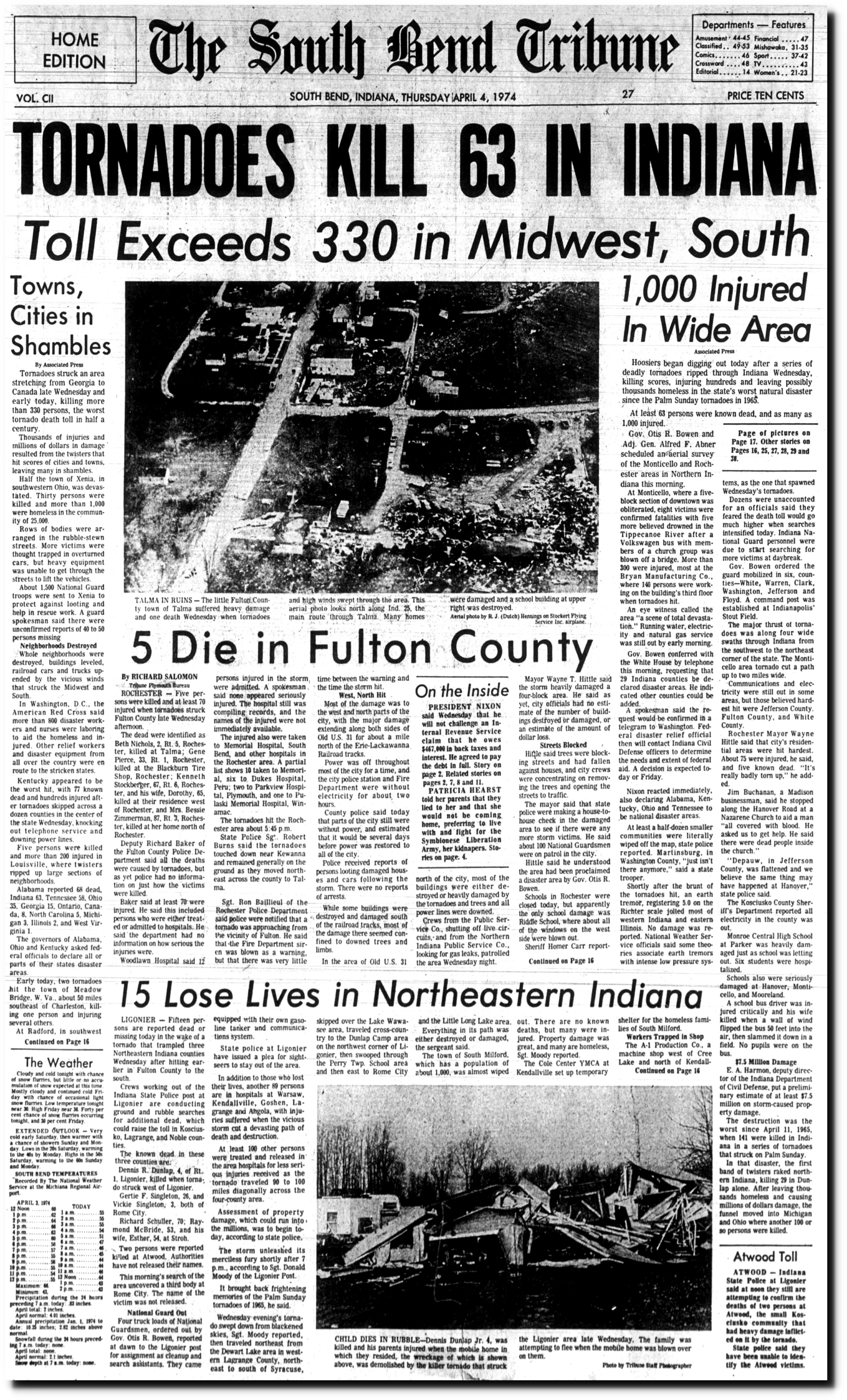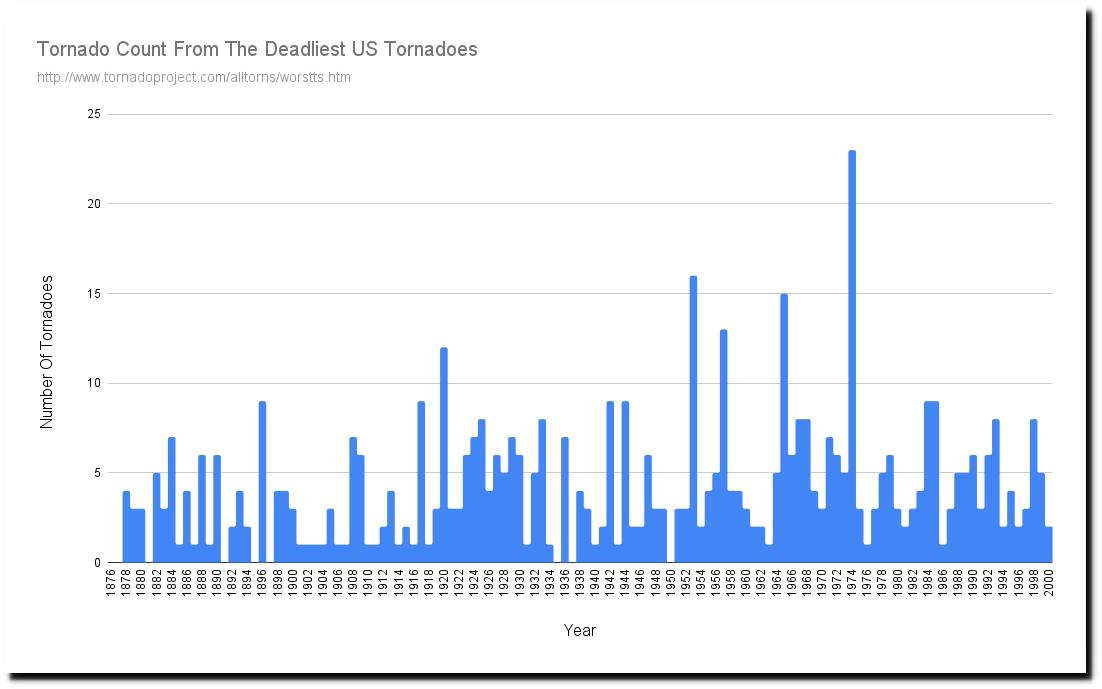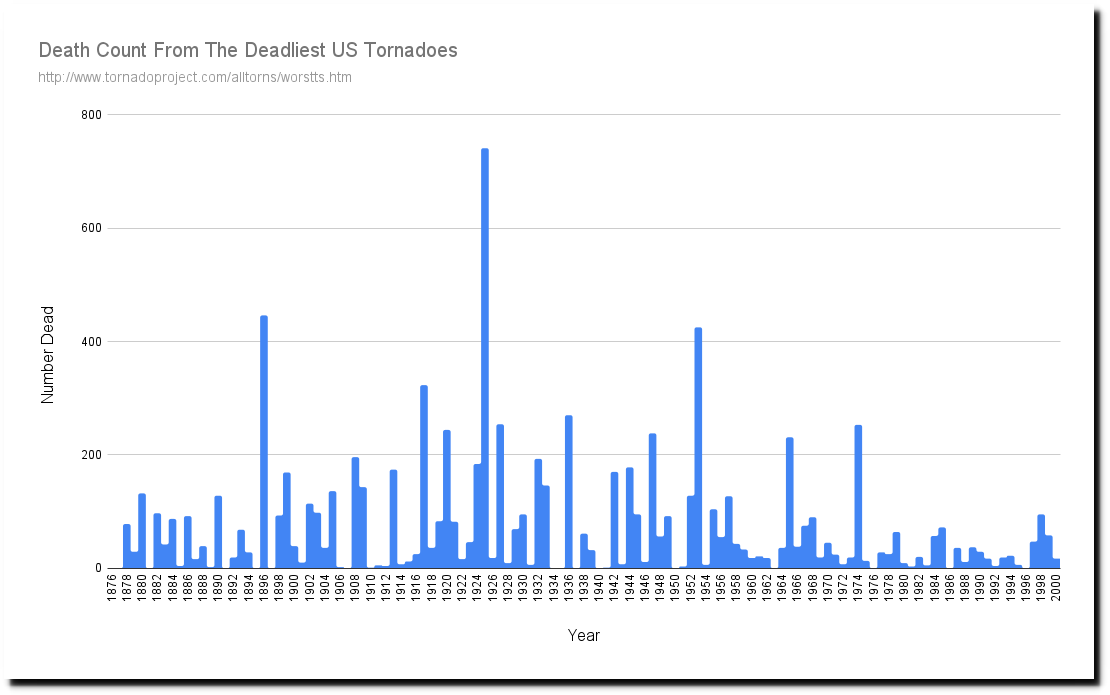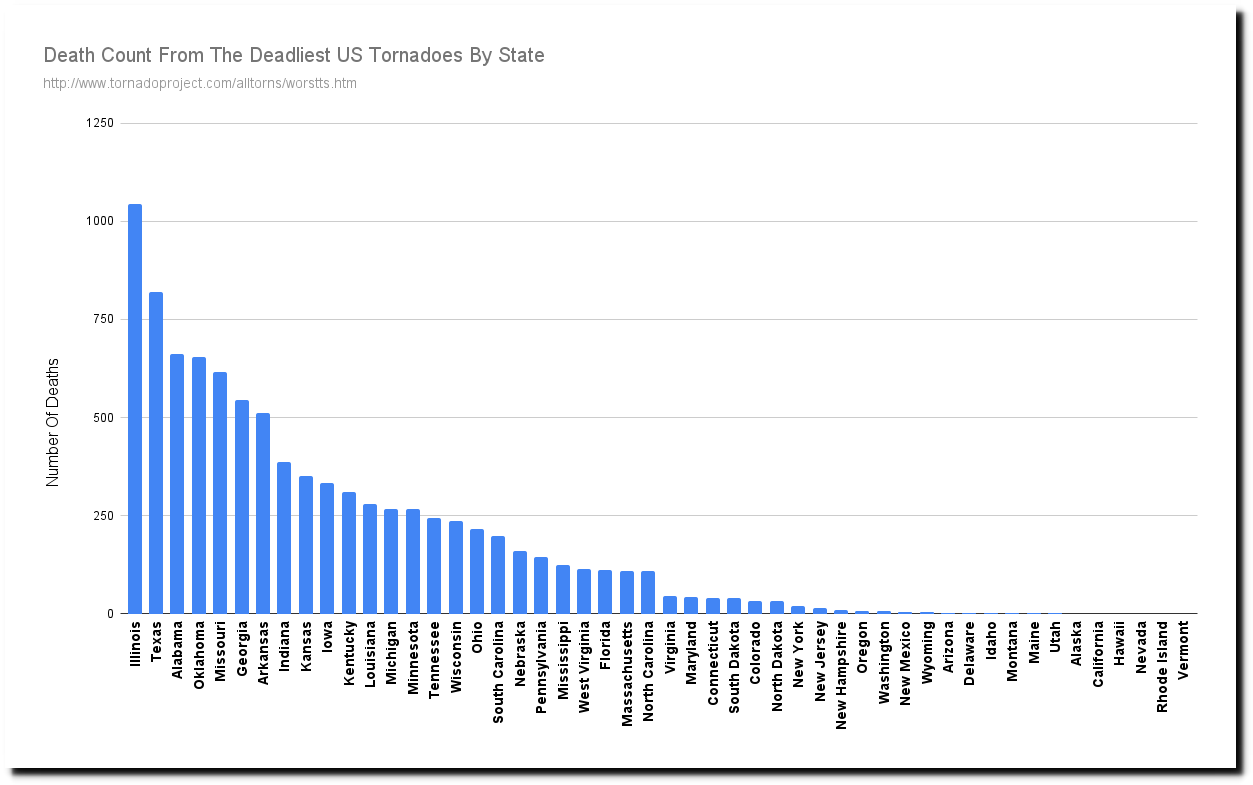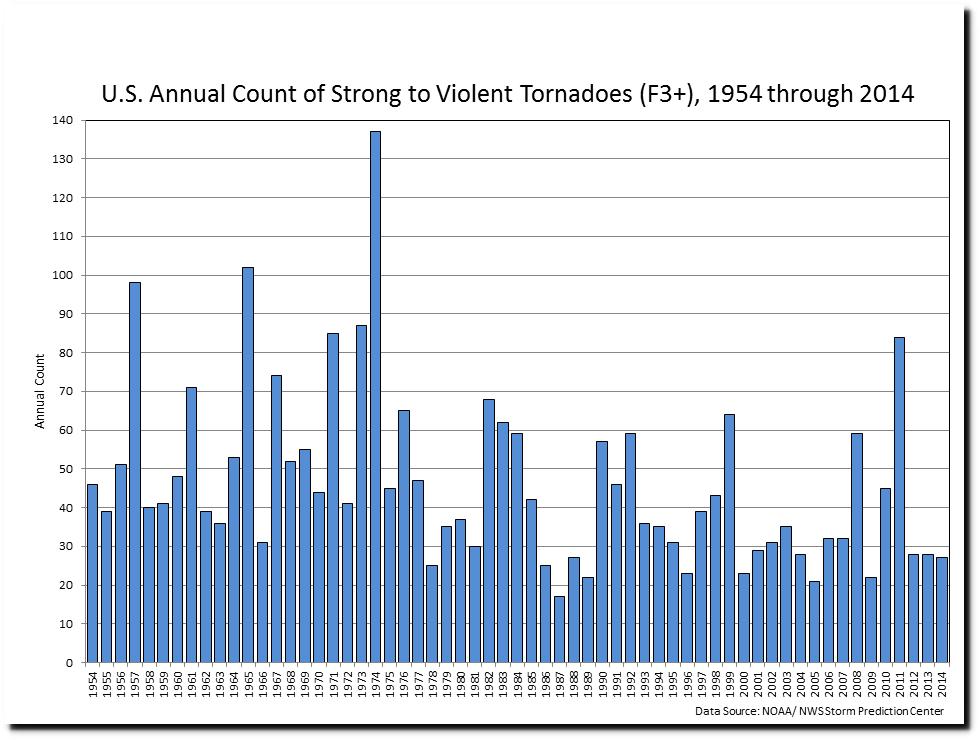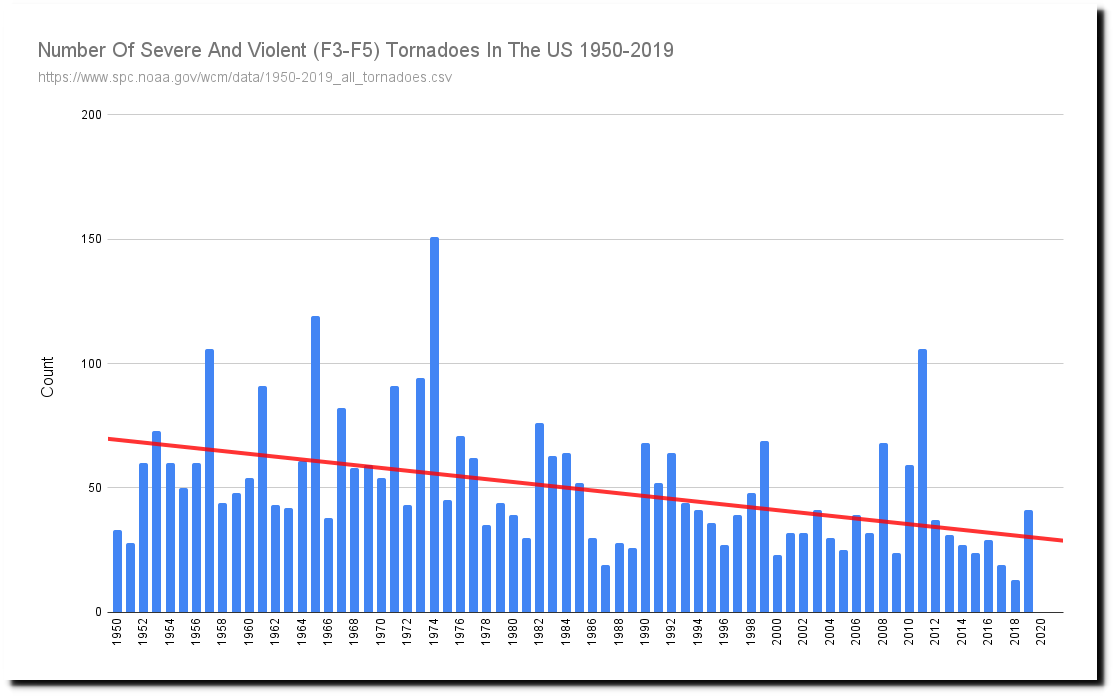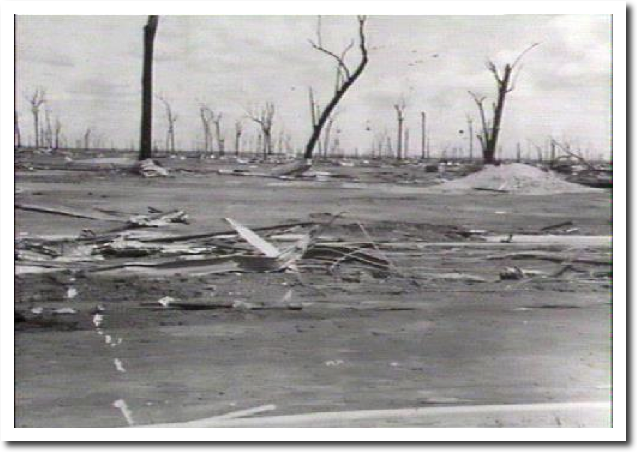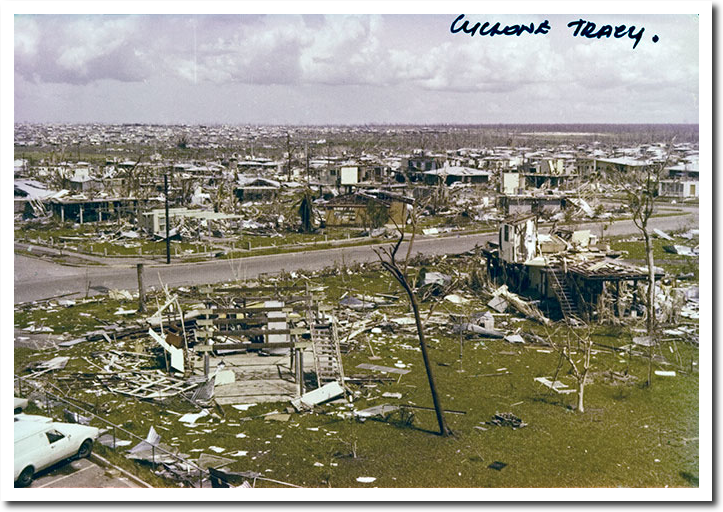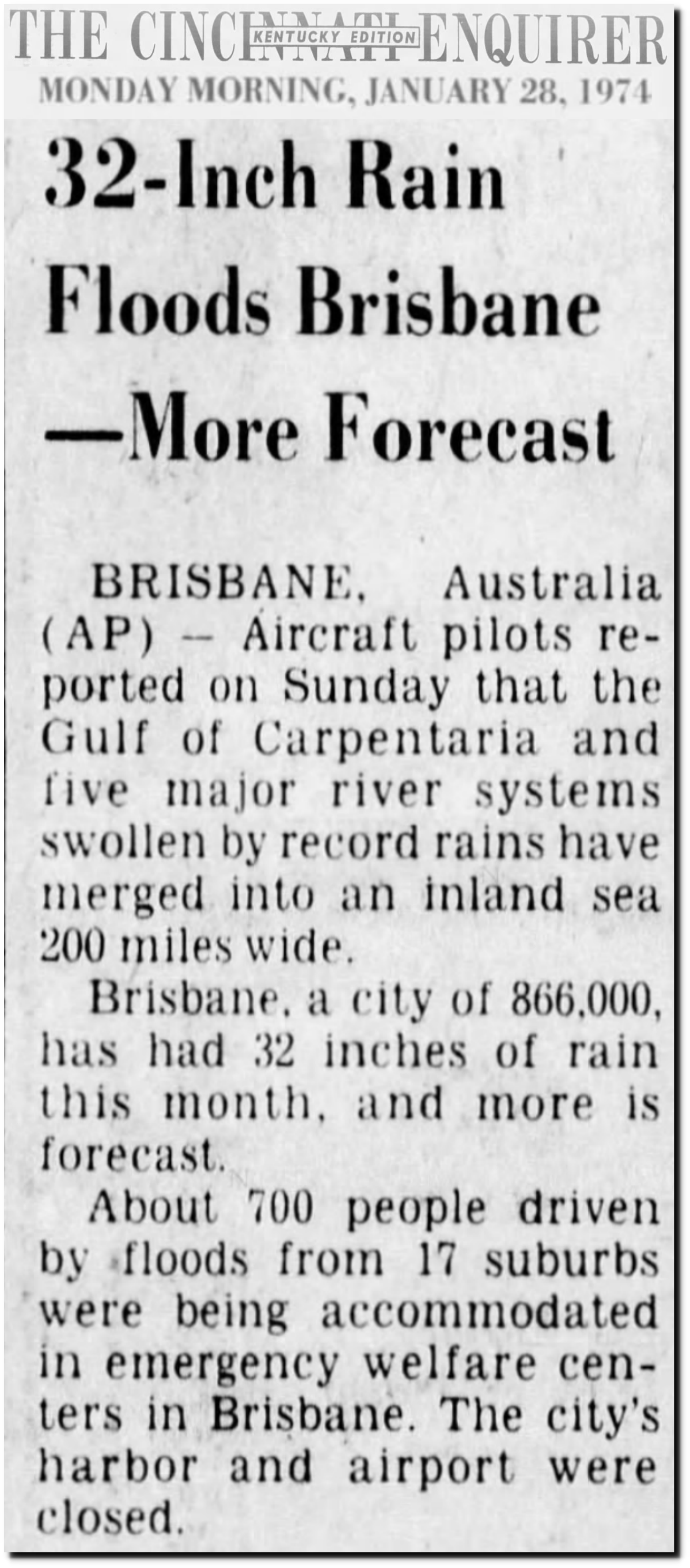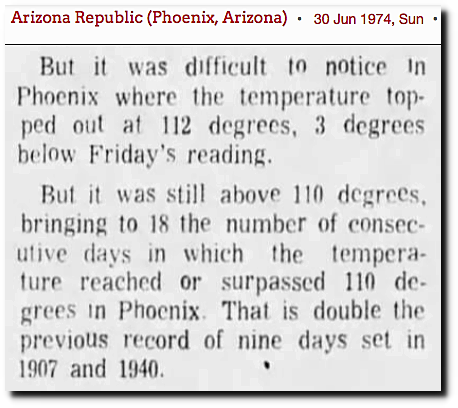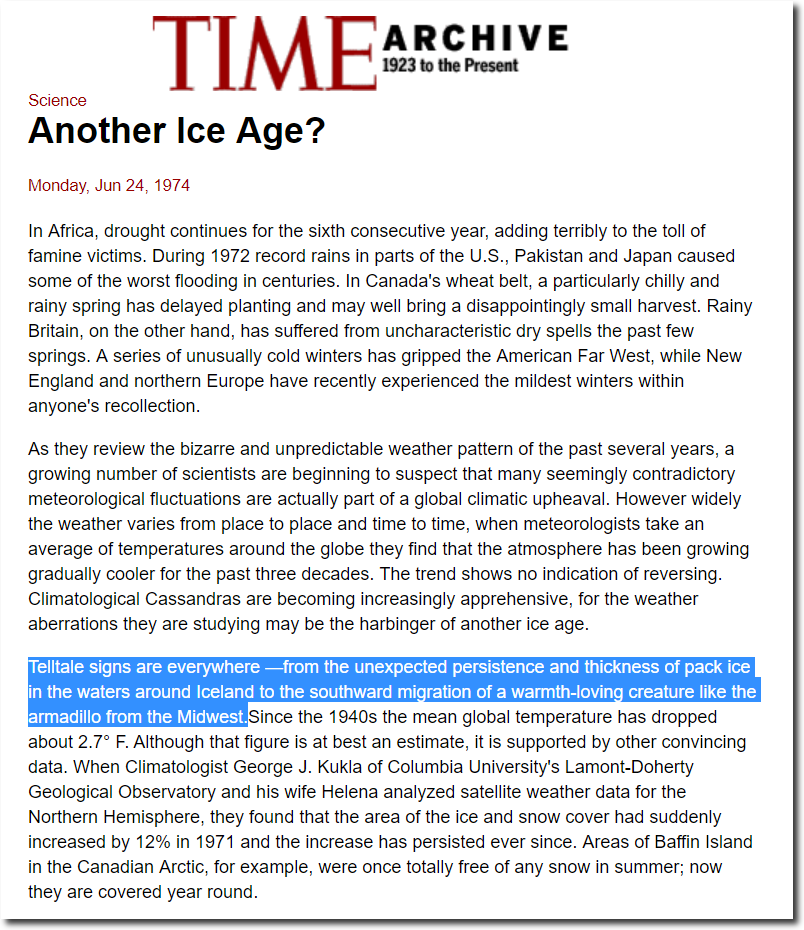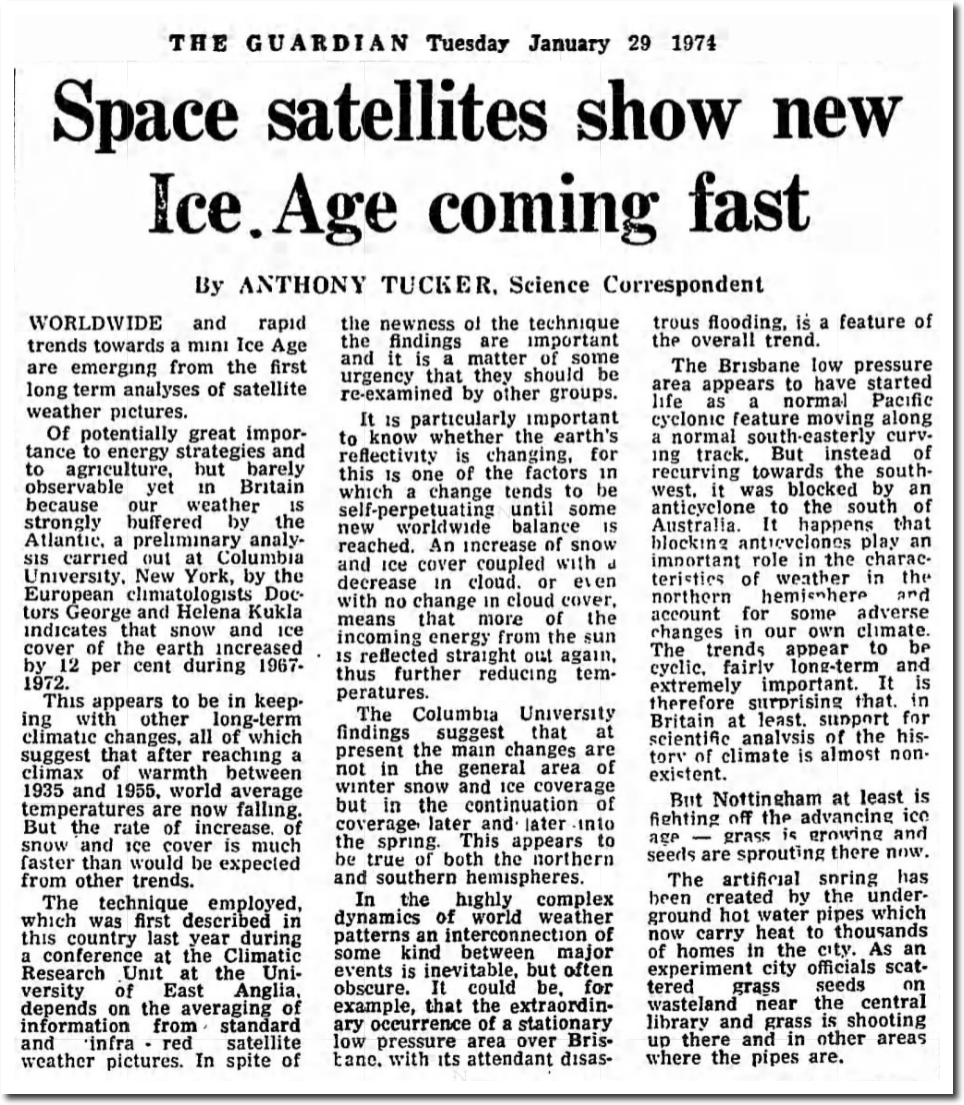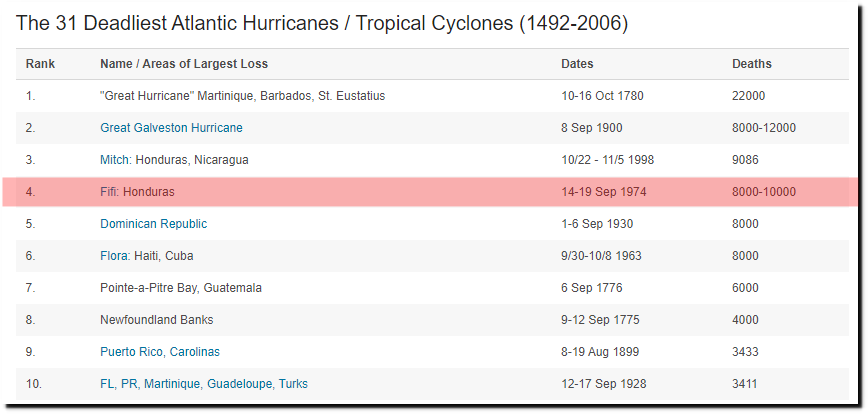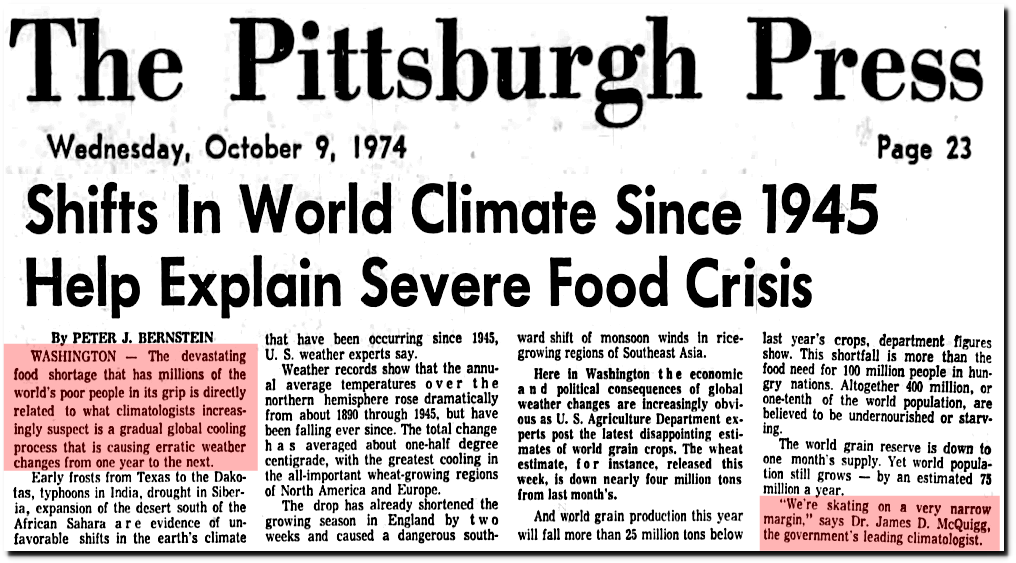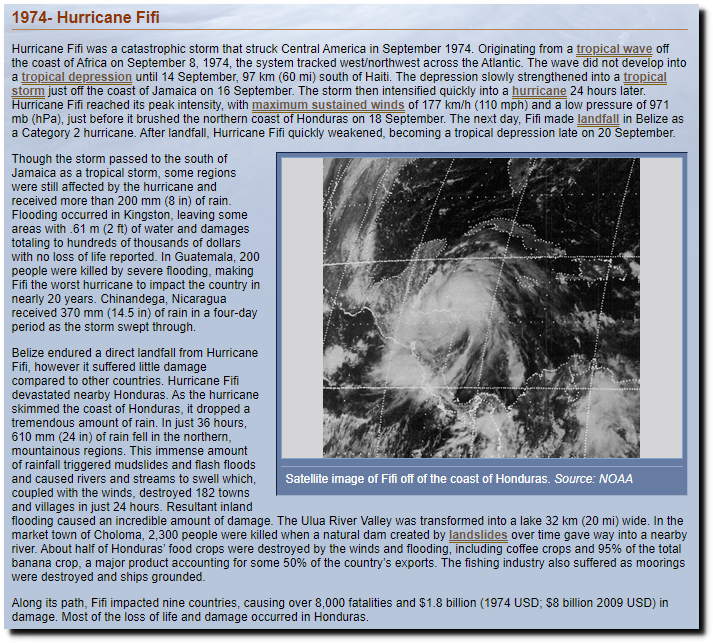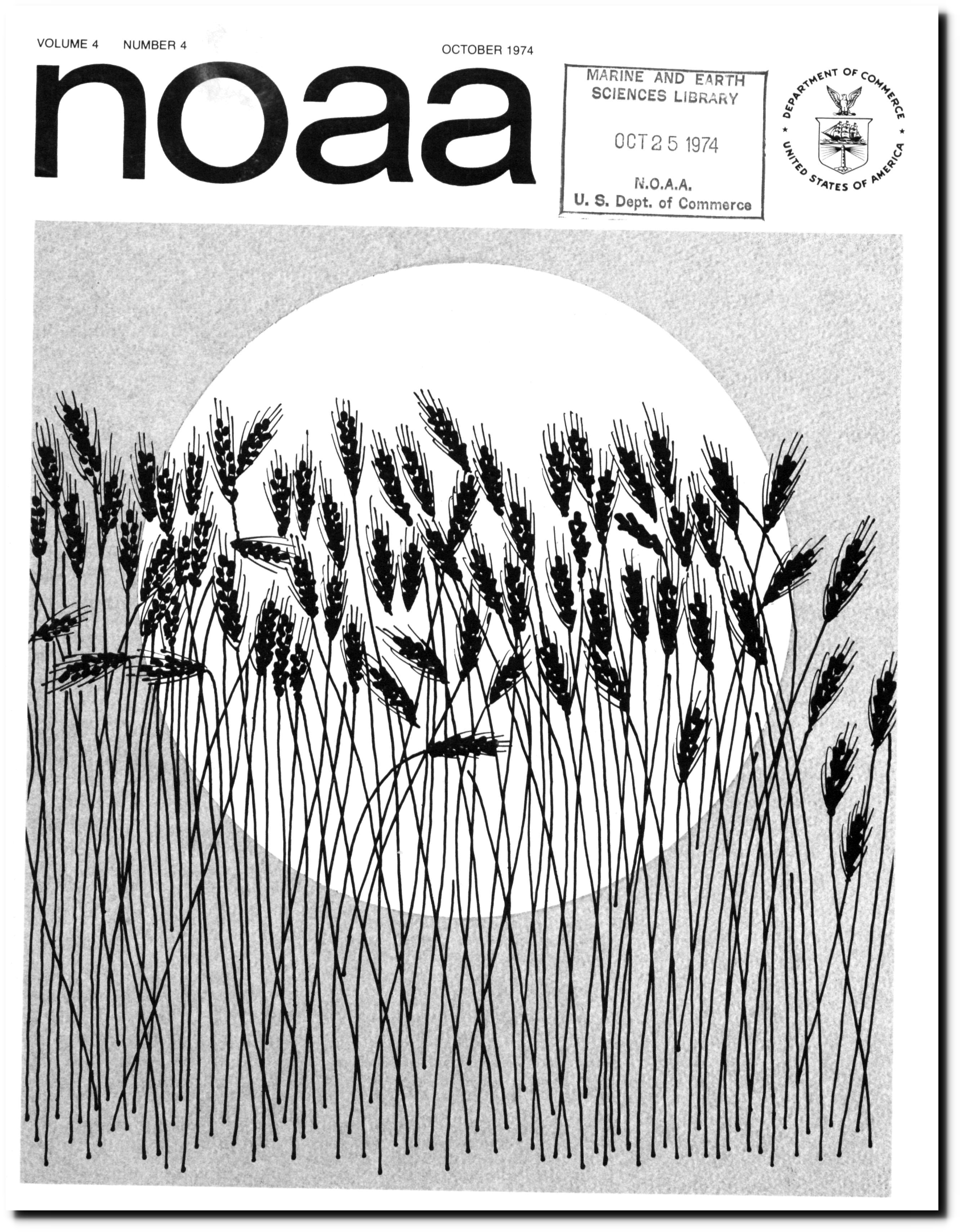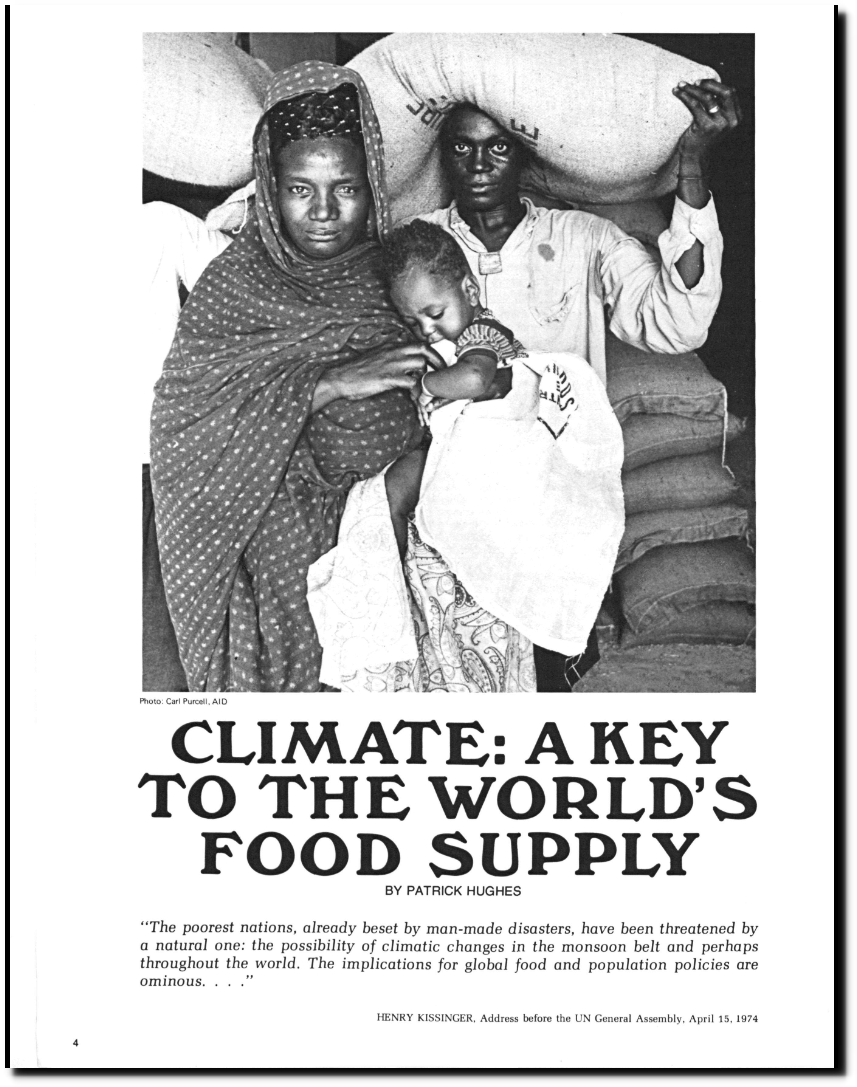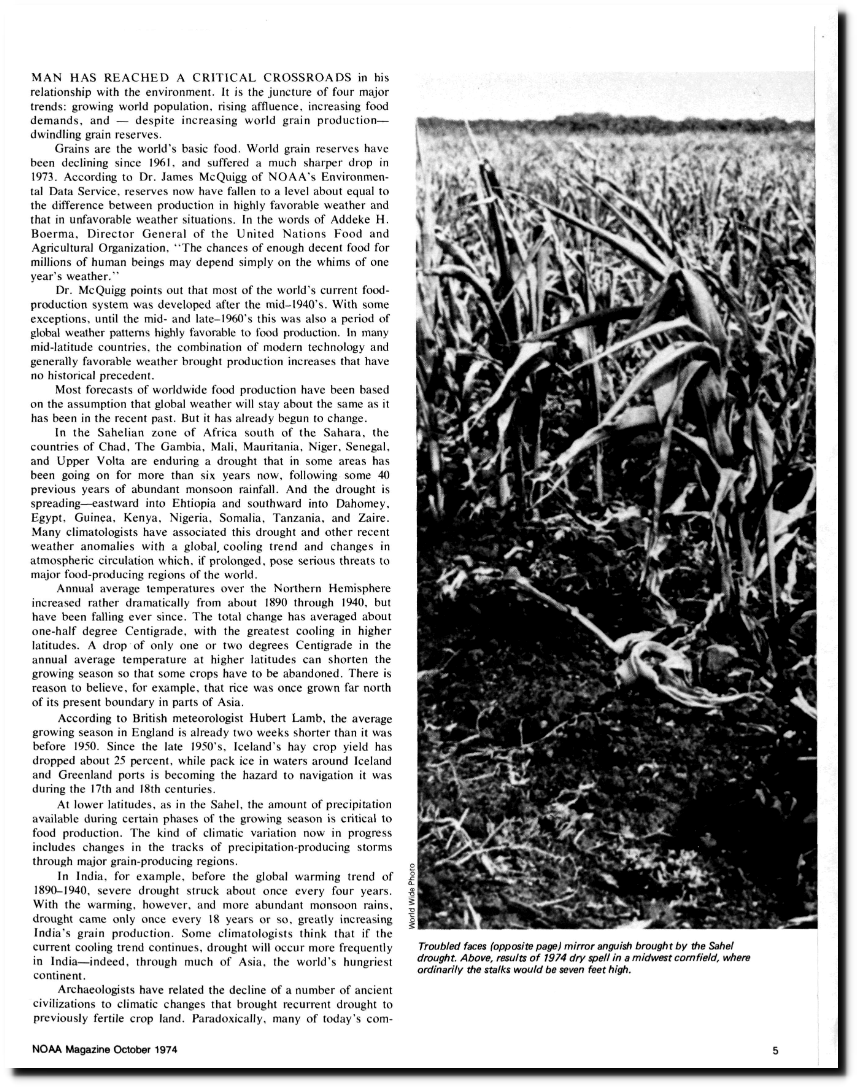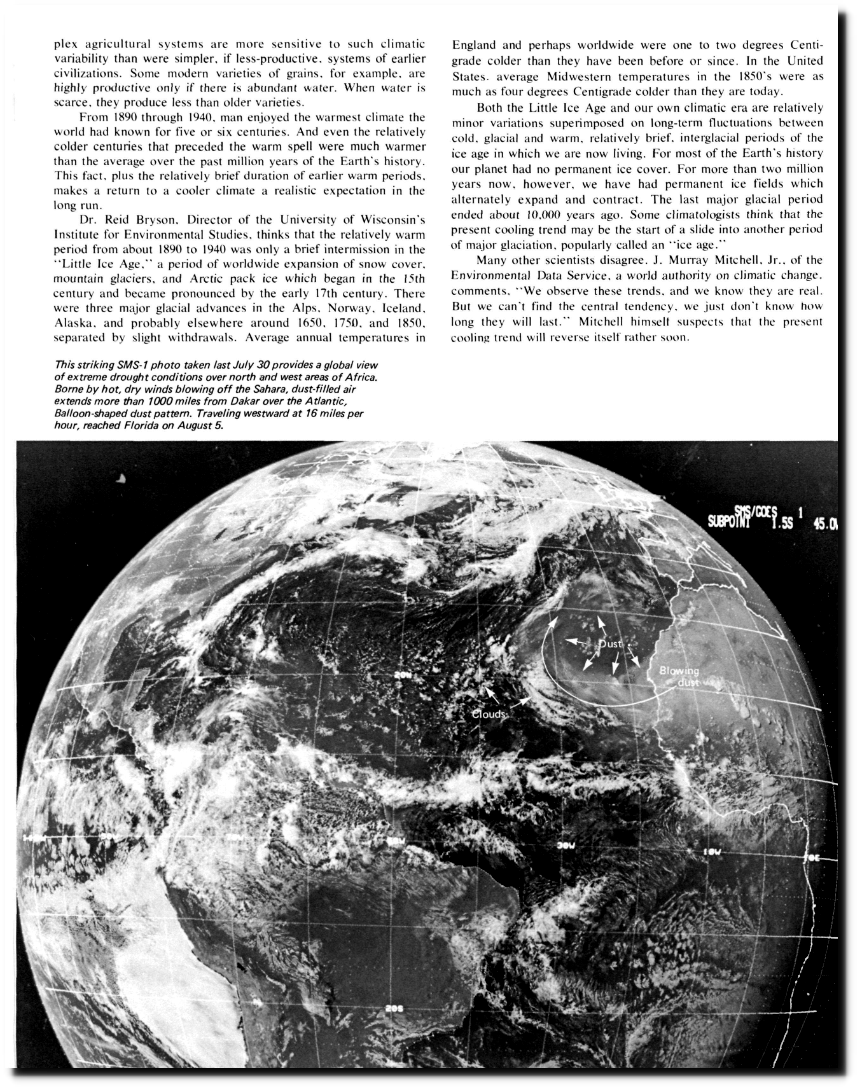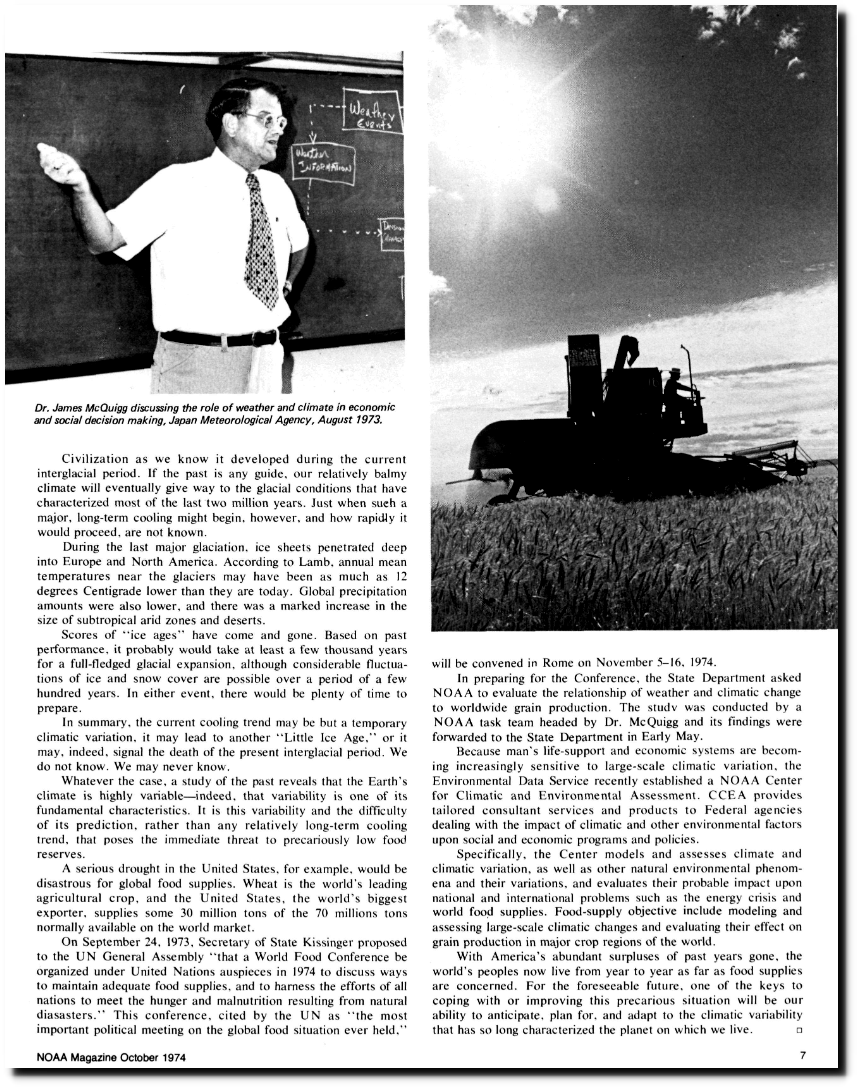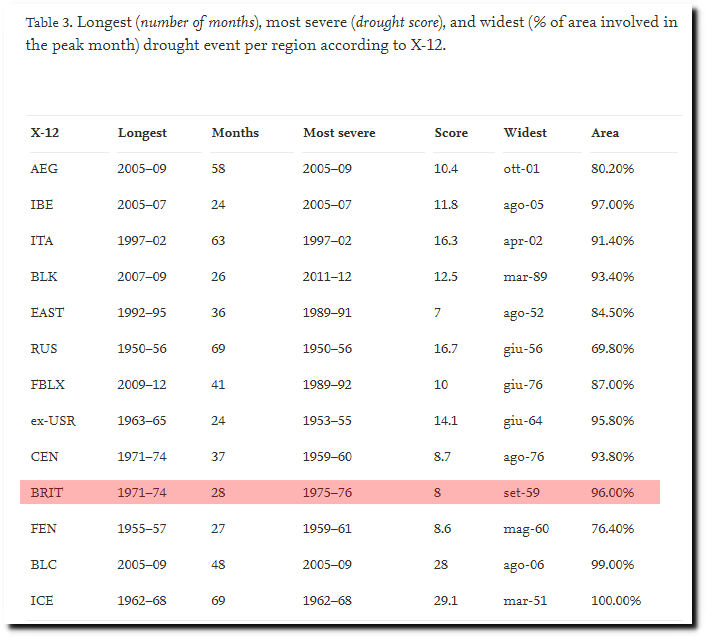The largest tornado outbreak in US history occurred on April 3-4, 1974 – right at the peak of the 1970s global cooling scare.

List of tornadoes in the 1974 Super Outbreak – Wikipedia
 06 Apr 1974, Page 1 – The Indianapolis Star at Newspapers.com
06 Apr 1974, Page 1 – The Indianapolis Star at Newspapers.com
04 Apr 1974, Page 1 – Mt. Vernon Register-News at Newspapers.com
04 Apr 1974, 1 – The South Bend Tribune at Newspapers.com
The United State’s Worst Tornadoes
https://www.spc.noaa.gov/wcm/data/1950-2019_all_tornadoes.csv
2018 will be the first year with no violent tornadoes in the United States – The Washington Post
Australia’s largest fire occurred that same year.
Australian bushfires: Why 2019 fire season is different from others
Darwin was destroyed by Cyclone Tracy in 1974.
Northeast Australia turned into an inland sea due to record rainfall and flooding.
28 Jan 1974, Page 12 – The Cincinnati Enquirer at Newspapers.com
Phoenix had their worst heatwave.
30 Jun 1974, Page 31 – Arizona Republic at Newspapers.com
TIME Magazine Archive Article — Another Ice Age? — Jun. 24, 1974
29 Jan 1974, 5 – The Guardian at Newspapers.com
The fourth deadliest Atlantic Hurricane occurred in 1974.
Deadliest Atlantic Hurricanes | Weather Underground
9 Oct 1974, Page 25 – The Pittsburgh Press at Newspapers.com
Hurricanes: Science and Society: 1974- Hurricane Fifi
Bangladesh famine of 1974 – Wikipedia
Most forecasts of worldwide food production have been based on the assumption that global weather will stay “Many climatologists have associated this drought and other recent weather anomalies with a global cooling trend and changes in atmospheric circulation which, if prolonged, pose serious threats to major food-producing regions of the world”
“In India, for example, before the global warming trend of 1890-1940. severe drought struck about once every four years. With the warming, however, and more abundant monsoon rains, drought came only once every 18 years or so, greatly increasing India’s grain production.””Annual average temperatures over the Northern Hemisphere increased rather dramatically from about 1890 through 1940, but have been falling ever since. The total change has averaged about one-half degree Centigrade”
“a study of the past reveals that the Earth’s climate is highly variable—indeed, that variability is one of its fundamental characteristics”
ftp://ftp.library.noaa.gov/docs.lib/htdocs/rescue/journals/noaa/QC851U461974oct.pdf
Britain’s longest and most severe droughts occurred from 1971 to 1976.
The biggest drought events in Europe from 1950 to 2012 – ScienceDirect


